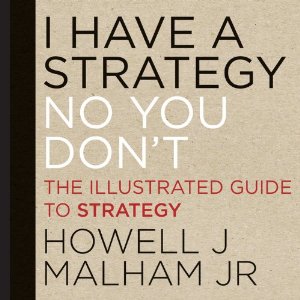The biggest thing sales leaders overlook: SALES!
Letter from a fan:
Dear Jeffrey, I’m a big fan of your weekly column, especially the one about making sales vs. measuring sales activity. Brilliant! It describes my situation to a tee. I’m an outside salesman who spends countless hours filling in itineraries, CRM notes, and reports. I had the biggest ever increase in sales last year by far, yet I have been told at times I didn’t make enough calls that week. Very frustrating. Thanks for any advice you can give me.
My first piece of advice is: Get your boss fired as soon as possible. Get a real boss, leader, coach and helper, and your sales will double.
You seem to be doing the right thing – INCREASING SALES, and having the best year of your career. What else could a manager want? Sounds like it’s your manager that needs to make more calls and increase his activity.
Let me address sales leaders…
REALITY QUESTION FOR SALES MANAGERS: Why would you, as a leader, take an improving salesperson who is having the best year of their career, and tell him or her they’re “not making enough calls”? Why not do something to actually help?
REALITY ANSWERS: (Pick any or all that apply.) You’re an idiot who knows nothing about leadership, coaching, or creating winners. You’re a micro manager with little or no current sales talent yourself. (You may have sold before, but that was before the internet – and you’ve probably never tweeted). You’re an unschooled leader, following the old way rather than learning what’s new. You’re using CRM as an accountability tool, rather than a sales tool. You’re totally clueless about your customer base and what will grow more and profitable sales. OUCH!
Successful sales leaders…
- Manage the sales cycle, not call activity.
- Measure the sales cycle, not sales activity.
- Help make follow-up calls with their salespeople to learn more about the sales cycle.
- Study the last ten sales to help understand what will make the 11th.
- Discover their most profitable customers – and then go on to uncover WHY they’re the most profitable.
- Find where the profit comes from in every sale.
- Discover their most loyal customer – and WHY they stay loyal.
- Make a few sales calls together with their people.
- Teach salespeople to ask better questions that emotionally engage.
REALITY: Maybe by spending more VALUE time with each existing customer it will increase their wallet share and your market share, and referrals will go UP.
REALITY: Maybe making too many calls is actually hampering growth. Someone measuring activity and numbers would never know that. Pity.
‘Measuring activity’ gives you a false read on the reality of sales. And as a leader, a manager, a coach, a teacher, you have a far greater responsibility to help increase sales than to just bellow out ‘more calls’ as your cure-all answer.
And maybe more calls IS the answer, but until you uncover the other ninety nine possibilities, you have no right to destroy or discourage your best salespeople from becoming better.
Or worse, they quit because they’re sick of you and your style.
Sales management and sales leadership is one of the hardest jobs in the world. First you have to know each of your people, why they’re working, why they’re working for you, and what will make them better. Second you have to know your customers, why your customers buy (beyond price), andwhat keeps them loyal. Third you have to be a better salesperson than they are. And fourth, you have to be a great teacher – able to convey your knowledge in a way that others WANT To hear you.
You know these things so that when your salespeople come to you with issues, you can actually help them make the sale – not make more calls.
Make more cold calls? Huh? In 2013? Really?
- If you’re looking to become a hated sales leader, with lots of turnover, make your people make lots of cold calls.
- If you’re wanting to drive your best people to the competition, make your people make lots of cold calls.
- And if you’re looking to have low morale and poor performance on your team, make your people make lots of cold calls.
NOTE WELL:
- The new cold call is a social media connection. Start with LinkedIn.
- The better cold call is an expanded relationship with an existing customer.
- The best cold call is a referral. One that you earn, not ask for.
BIG REALITY: The object of sales leadership is to IMPROVE INDIVIDUAL SALES, not improve “team” sales.
BIGGER REALITY: Your encouragement and enthusiasm – to them, and with them – will help build both their confidence AND their sales.
BIGGEST REALITY: Managers somehow believe their salespeople want to be on their team and win for the team and the company. To hit some big goal arbitrarily set by management. Nothing could be further from the truth. Salespeople wanna win for themselves and their families – and they wanna win for their customers. Not for you, your other employees, or the company.
Get a grip on ‘why’ salespeople want to win. Give them real-world help. Coach them, and it will have a major impact on their sales, and your leadership success.
Reprinted with permission from Jeffrey H. Gitomer and Buy Gitomer.
About the Author



 Data, data everywhere…
Data, data everywhere…


 Scot Park is a Principal and co-founder of Artower Advisory Services. He has spent the past two decades serving the Healthcare Industry with a focused on Aging Services, Senior Housing and Post-Acute/Long-Term Care. Scot holds a BA in Economics with concentrated studies in Public Administration from John Carroll University. To read Scot’s complete biography,
Scot Park is a Principal and co-founder of Artower Advisory Services. He has spent the past two decades serving the Healthcare Industry with a focused on Aging Services, Senior Housing and Post-Acute/Long-Term Care. Scot holds a BA in Economics with concentrated studies in Public Administration from John Carroll University. To read Scot’s complete biography,